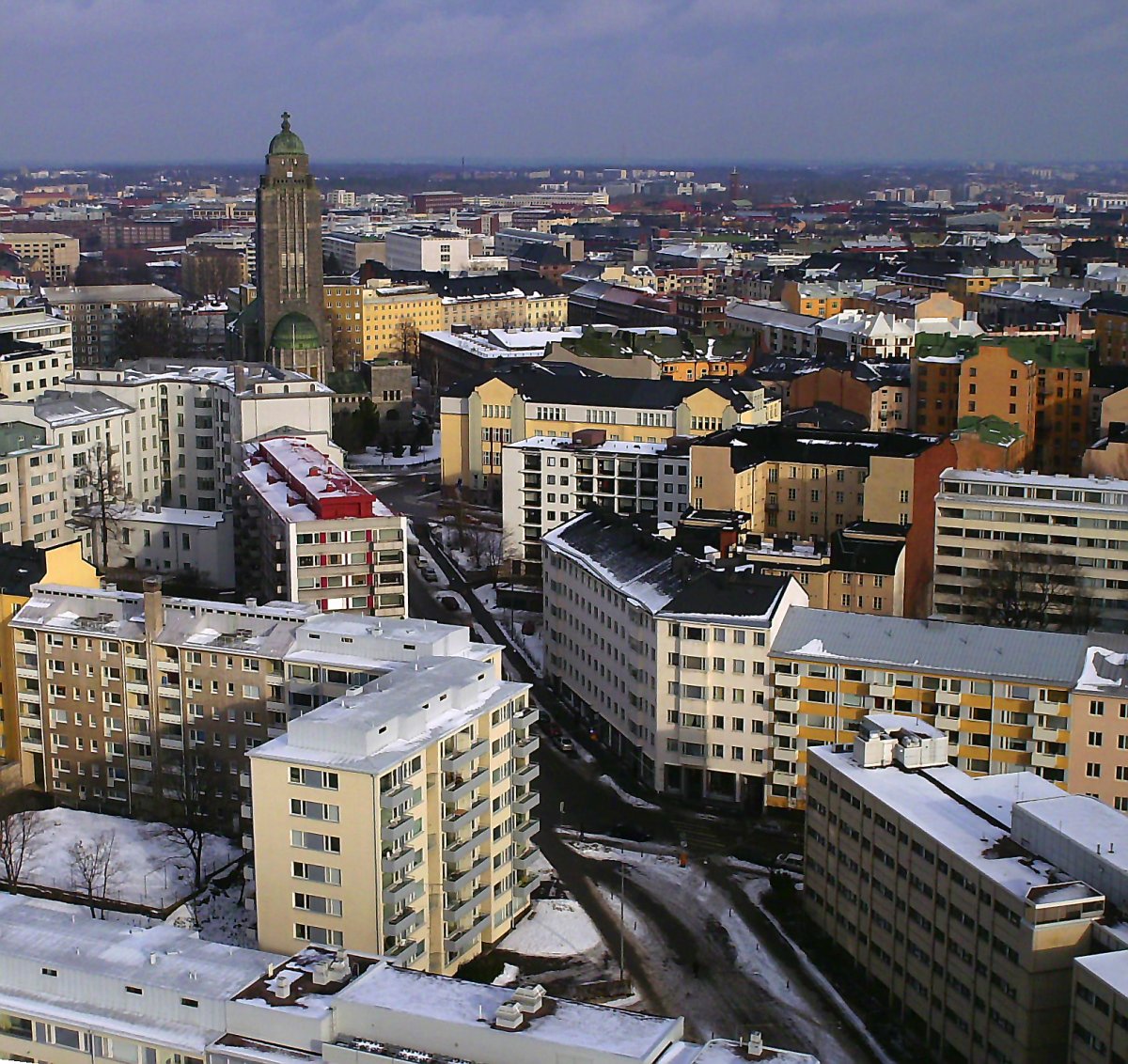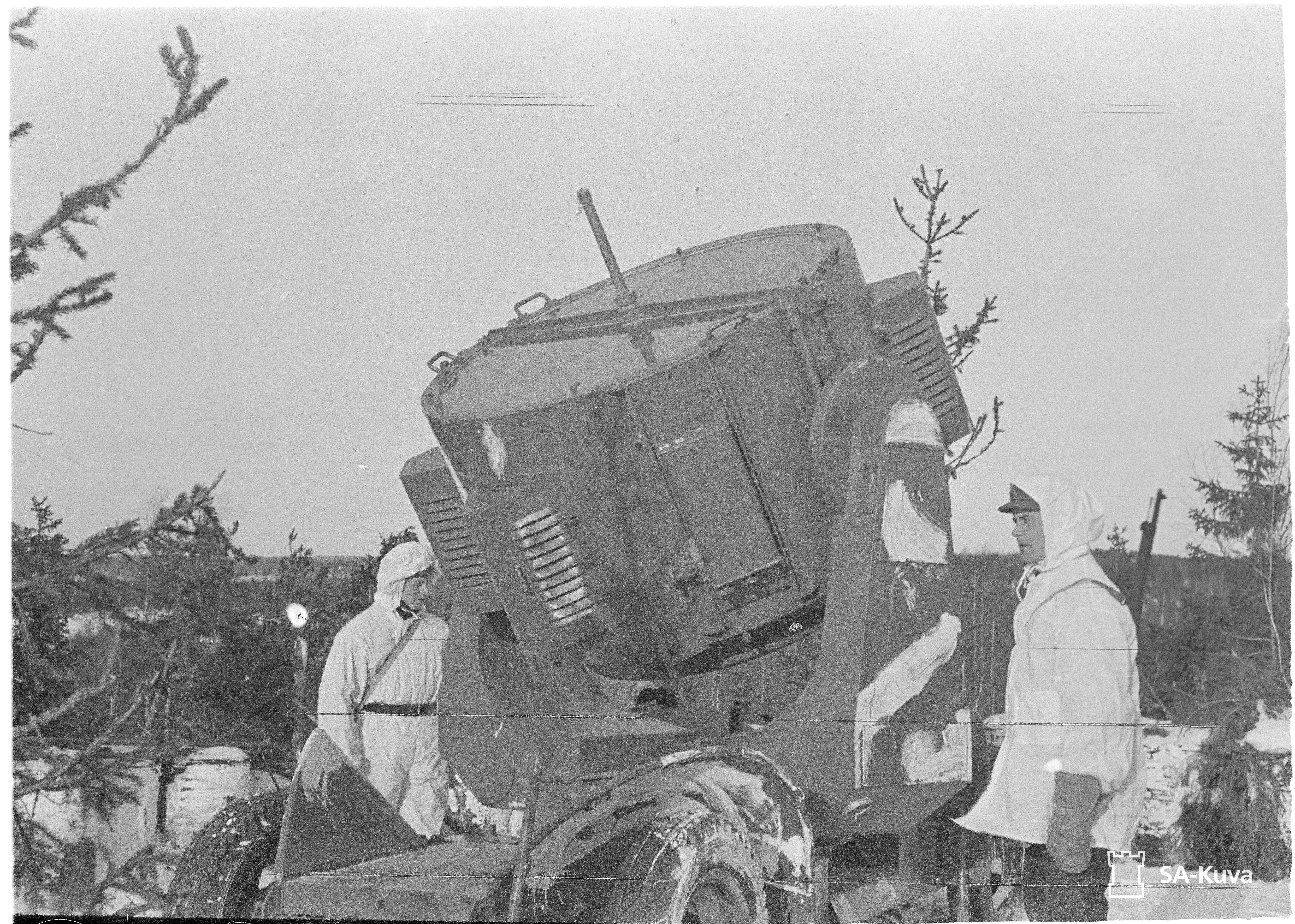|
Pitkäsilta
The Pitkäsilta (; , ) is a bridge in Helsinki, Finland, connecting the districts of Kruununhaka and Siltasaari. It was completed in 1912 by the design of the architect Runar Eklund. Pitkäsilta is one of the best known landmarks of Helsinki. The bridge's name comes from near the end of the 19th century, when the district of Siltasaari was still an island. Two bridges led to the island, and bridge in the spot of the current Pitkäsilta was longer. History The first wooden bridge across the Kaisaniemi Bay was opened 1651, followed by three other wooden ones until the present stone bridge was built in 1910–1912. Pitkäsilta was damaged in the 1918 Finnish Civil War Battle of Helsinki as well as in the air raids of World War II. Some of the marks are still visible. National symbolism The Pitkäsilta connects Helsinki downtown to the once working-class districts of Siltasaari, Kallio and Hakaniemi Hakaniemi (; ) is an unofficial district of Helsinki, the Finland, Finnish cap ... [...More Info...] [...Related Items...] OR: [Wikipedia] [Google] [Baidu] |
Hakaniemi
Hakaniemi (; ) is an unofficial district of Helsinki, the Finland, Finnish capital. It covers most of the Subdivisions of Helsinki, neighbourhood of Siltasaari in the district of Kallio. Hakaniemi is located at the sea shore and is separated from the city centre by the Siltavuorensalmi strait and from the district of Linjat by the street Hämeentie. Historically, Hakaniemi was often associated with the working class and workers' associations. However, the cost of living has risen considerably in recent years and is now on par with that of the rest of central Helsinki. The main office of the Central Organisation of Finnish Trade Unions (SAK), the party offices of the Social Democratic Party of Finland (SDP) and the Left Alliance (Finland), Left Alliance, as well as the Helsinki workers' house Paasitorni are located in Hakaniemi. The May Day march of the working class in Helsinki usually starts at the Hakaniemi market square. The best-known features of Hakaniemi include a large and ... [...More Info...] [...Related Items...] OR: [Wikipedia] [Google] [Baidu] |
Kallio
Kallio (; ; literally " the rock") is a district and a neighbourhood in Helsinki, the capital of Finland, located on the eastern side of the Helsinki peninsula about one kilometre north from the city centre. It is one of the most densely populated areas in Finland. Kallio is separated from the city centre by the Siltasaarensalmi strait, over which is a bridge called Pitkäsilta ("long bridge"). Traditionally, the bridge symbolizes the divide between the affluent centre and the more working class areas around Kallio. After the forming of the new centre in the 19th century, the city expanded northward. The intense industrialization which began in the 1860s in Helsinki saw the construction of the industrial areas around Sörnäinen harbour and to the workers' district of Kallio, with the area becoming inhabited mostly by factory workers. However, most of the working-class families have long ago been replaced as the most typical Kallio residents by young adults and elderly peopl ... [...More Info...] [...Related Items...] OR: [Wikipedia] [Google] [Baidu] |
Battle Of Helsinki
The Battle of Helsinki was a 1918 Finnish Civil War battle, fought on 12–13 April by the German Empire, German troops and White Guard (Finland), Finnish Whites against the Red Guards (Finland), Finnish Reds in Helsinki, Finland. Together with the battles of Battle of Tampere, Tampere and Battle of Vyborg, Vyborg, it was one of the three major urban battles of the Finnish Civil War. The Germans invaded Helsinki despite the opposition of Finnish White Army leader Carl Gustaf Emil Mannerheim who wanted to attack the capital city with his own troops after Tampere had fallen on 6 April. However, the Germans had their own interest in taking Helsinki as quickly as possible and then moving further east towards the Soviet Russia, Russian border. The city had been under Red control for 11 weeks since the beginning of the war. The German Baltic Sea Division landed in Finland on 3 April and entered the Helsinki area eight days later. In the city centre, the defending Reds did not have de ... [...More Info...] [...Related Items...] OR: [Wikipedia] [Google] [Baidu] |
Helsinki
Helsinki () is the Capital city, capital and most populous List of cities and towns in Finland, city in Finland. It is on the shore of the Gulf of Finland and is the seat of southern Finland's Uusimaa region. About people live in the municipality, with million in the Helsinki capital region, capital region and million in the Helsinki metropolitan area, metropolitan area. As the most populous List of urban areas in Finland by population, urban area in Finland, it is the country's most significant centre for politics, education, finance, culture, and research. Helsinki is north of Tallinn, Estonia, east of Stockholm, Sweden, and west of Saint Petersburg, Russia. Helsinki has significant History of Helsinki, historical connections with these three cities. Together with the cities of Espoo, Vantaa and Kauniainen—and surrounding commuter towns, including the neighbouring municipality of Sipoo to the east—Helsinki forms a Helsinki metropolitan area, metropolitan are ... [...More Info...] [...Related Items...] OR: [Wikipedia] [Google] [Baidu] |
Finland
Finland, officially the Republic of Finland, is a Nordic country in Northern Europe. It borders Sweden to the northwest, Norway to the north, and Russia to the east, with the Gulf of Bothnia to the west and the Gulf of Finland to the south, opposite Estonia. Finland has a population of 5.6 million. Its capital and largest city is Helsinki. The majority of the population are Finns, ethnic Finns. The official languages are Finnish language, Finnish and Swedish language, Swedish; 84.1 percent of the population speak the first as their mother tongue and 5.1 percent the latter. Finland's climate varies from humid continental climate, humid continental in the south to boreal climate, boreal in the north. The land cover is predominantly boreal forest biome, with List of lakes of Finland, more than 180,000 recorded lakes. Finland was first settled around 9000 BC after the Last Glacial Period, last Ice Age. During the Stone Age, various cultures emerged, distinguished by differen ... [...More Info...] [...Related Items...] OR: [Wikipedia] [Google] [Baidu] |
Kruununhaka
Kruununhaka (; ) is a Subdivisions of Helsinki#Neighbourhoods, neighbourhood of Helsinki, the capital of Finland. Kruununhaka became the area next to the harbour and the center, when Helsinki was moved from the earlier location in the mid-1660s. From the very beginning, the residents included city and state officials. Many buildings of the University of Helsinki are also situated in Kruununhaka. The area has become known for its vintage shops. Notable people *Kirka Babitzin, singer *Harri Holkeri, politician *Magnus Lindberg, composer *Johannes Virolainen, politician *Bror-Erik Wallenius, sports commentator *Valtteri Bottas, racing driver Gallery Image:Helsinki Cathedral in July 2004.jpg, Helsinki Cathedral Image:Presidentinlinna.jpg, Presidential Palace, Helsinki, Presidential Palace Image:Collegium of Advanced Studies, University of Helsinki.JPG, Aleksanteri Institute Image:Kruununhaka-Helsinki-As-Seen-From-Katajanokka.JPG, Pohjoisranta waterfront in Kruununhaka as seen f ... [...More Info...] [...Related Items...] OR: [Wikipedia] [Google] [Baidu] |
Siltasaari
Siltasaari ( Finnish), or Broholmen ( Swedish), is a central neighborhood of Helsinki, Finland Finland, officially the Republic of Finland, is a Nordic country in Northern Europe. It borders Sweden to the northwest, Norway to the north, and Russia to the east, with the Gulf of Bothnia to the west and the Gulf of Finland to the south, .... Most of its area is unofficially known also as Hakaniemi. {{Helsinki Kallio ... [...More Info...] [...Related Items...] OR: [Wikipedia] [Google] [Baidu] |
Bombing Of Helsinki In World War II
Helsinki, the capital of Finland, was bombed repeatedly during World War II. Between 1939 and 1944, Finland was subjected to a number of bombing campaigns by the Soviet Union. The largest were three raids in February 1944, which have been called The Great Raids Against Helsinki. Helsinki's air defence In the autumn of 1939, Helsinki was protected by the ''1st Anti Aircraft Regiment'' consisting of four heavy anti-aircraft batteries of three to four guns each, one light AA battery and one AA machine gun company. The air defence of Helsinki was significantly strengthened from the spring of 1943 onwards under the lead of Colonel Pekka Jokipaltio. During the Continuation War, Germany provided two early warning radars and four gun laying radars to Helsinki, further, 18 very effective German heavy 88 mm AA guns were also placed in Helsinki. The new six-gun batteries were grouped at Lauttasaari, Käpylä and in Santahamina. By February 1944 Helsinki was protected by 13 light a ... [...More Info...] [...Related Items...] OR: [Wikipedia] [Google] [Baidu] |
Bridges Completed In 1912
A bridge is a structure built to Span (engineering), span a physical obstacle (such as a body of water, valley, road, or railway) without blocking the path underneath. It is constructed for the purpose of providing passage over the obstacle, which is usually something that is otherwise difficult or impossible to cross. There are many different designs of bridges, each serving a particular purpose and applicable to different situations. Designs of bridges vary depending on factors such as the function of the bridge, the nature of the terrain where the bridge is constructed and anchored, the material used to make it, and the funds available to build it. The earliest bridges were likely made with fallen trees and stepping stones. The Neolithic people built boardwalk bridges across marshland. The Arkadiko Bridge, dating from the 13th century BC, in the Peloponnese is one of the oldest arch bridges in existence and use. Etymology The ''Oxford English Dictionary'' traces the origin of ... [...More Info...] [...Related Items...] OR: [Wikipedia] [Google] [Baidu] |
Bridges In Finland
A bridge is a structure built to span a physical obstacle (such as a body of water, valley, road, or railway) without blocking the path underneath. It is constructed for the purpose of providing passage over the obstacle, which is usually something that is otherwise difficult or impossible to cross. There are many different designs of bridges, each serving a particular purpose and applicable to different situations. Designs of bridges vary depending on factors such as the function of the bridge, the nature of the terrain where the bridge is constructed and anchored, the material used to make it, and the funds available to build it. The earliest bridges were likely made with fallen trees and stepping stones. The Neolithic people built boardwalk bridges across marshland. The Arkadiko Bridge, dating from the 13th century BC, in the Peloponnese is one of the oldest arch bridges in existence and use. Etymology The ''Oxford English Dictionary'' traces the origin of the word ''bridge' ... [...More Info...] [...Related Items...] OR: [Wikipedia] [Google] [Baidu] |
Buildings And Structures In Helsinki
A building or edifice is an enclosed Structure#Load-bearing, structure with a roof, walls and window, windows, usually standing permanently in one place, such as a house or factory. Buildings come in a variety of sizes, shapes, and functions, and have been adapted throughout history for numerous factors, from building materials available, to weather conditions, land prices, ground conditions, specific uses, monument, prestige, and aesthetic reasons. To better understand the concept, see ''Nonbuilding structure'' for contrast. Buildings serve several societal needs – occupancy, primarily as shelter from weather, security, living space, privacy, to store belongings, and to comfortably live and work. A building as a shelter represents a physical separation of the :Human habitats, human habitat (a place of comfort and safety) from the ''outside'' (a place that may be harsh and harmful at times). buildings have been objects or canvasses of much architecture, artistic expression. ... [...More Info...] [...Related Items...] OR: [Wikipedia] [Google] [Baidu] |







